Cover number sense standards with this Numbers, Counting and Ordering unit of study for 1st and 2nd grades.
If you are working on creating your own number sense unit of study, begin by looking through this collection.
You will find an assortment of activities and worksheets to help you begin your planning.
This is another free resource for teachers and homeschool families from The Curriculum Corner.
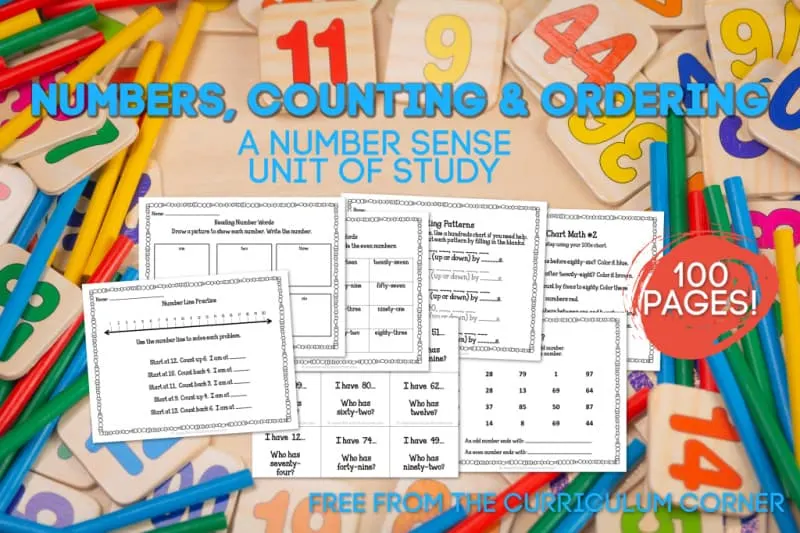
What is number sense?
Number sense relates to students building the skills that help them understand and connect numbers.
Children who have developed a strong number sense are able to visualize numbers in different ways.
They can see connections. This helps make it easier for them to work with numbers in math.
It might mean that a student is able to quickly find ways to make the number ten.
Or, they can visualize a number in order to help them determine which is bigger.
As teachers, it is important for us to introduce and then continue to practice these skills throughout school.
You will find the complete collection of printables needed for these lessons by clicking on the bold Number Sense Unit, blue words at the bottom of this post.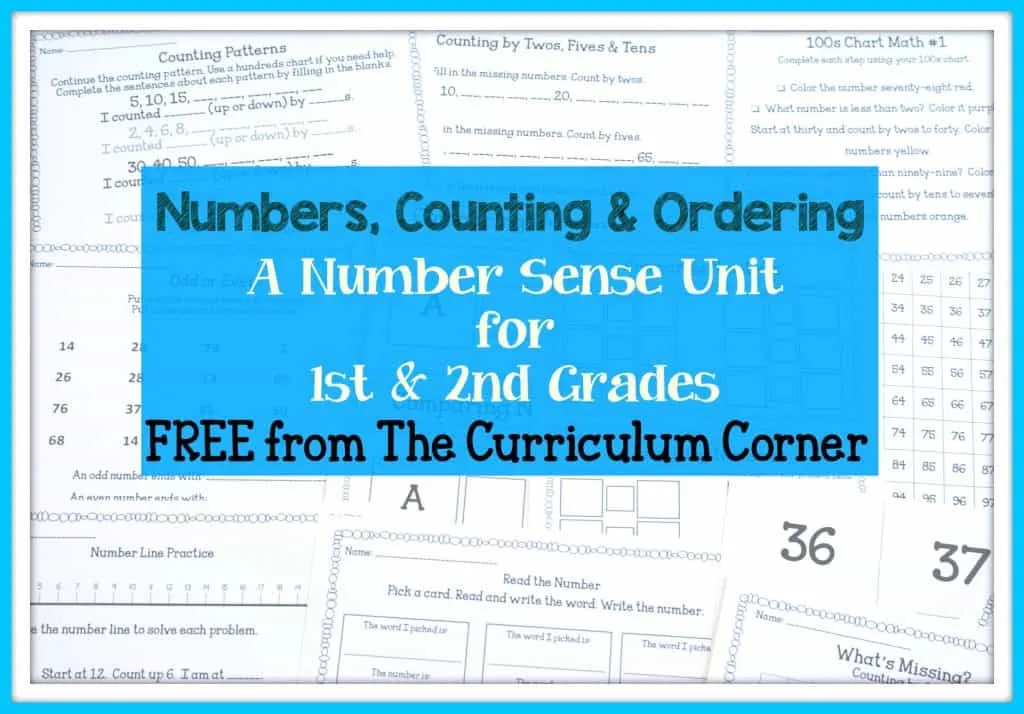
About this unit of study
This number sense unit of study is designed to be an introductory math unit for your school year.
You can introduce or review number sense skills with these lessons. Choose the activities that fit your students’ needs.
You might also need this free collection when studying number sense:
Some of the materials you will need to complete the activities below are found within our
(Click the blue title to be able to download the free kit.)
Ideas for your Number Sense Unit of Study
Get active with a Life-Size Number Line!
- Create your own using the full size number cards found within our math tools collection.
- Tape the number cards on the floor to create a number line.
- Another alternative is to line up 10 students and have each hold a number card.
- Choose a volunteer student to start on a given number. Have the student practice going up or down a given number. For example, you might ask a student to count up 2. The student will demonstrate moving up 2. Be sure to talk about where the student started and ended.
- You might enforce the skills being practice by writing an addition or subtraction fact on the board.
Printable Number Line Practice
Within the download, you will find multiple number line practice pages. Students practice moving up and down on a number line.
Help Students Build Beginning Number Relationships!
We suggest printing the dot cards found within our math tools collection to help students build number relationships. Along with the dot cards, we also like having dominoes to use as an additional manipulative.
Ideas for introducing these materials during your reading workshop are below:
- Share the dot cards and dominoes with students.
- Have students practice identifying the number of dots on each.
- Have students share observations and patterns they see. Students might notice that a domino with six dots is a double of three or a domino with one dot doesn’t make a pair.
- Allow students to get in small groups and practice recognizing numbers on the cards and dominoes.
- Place students in partners or small groups. Give each group a set of ten frame flashcards. Students practice identifying the numbers on each card.
- Once students have been introduced to the concept of using dominoes and dot cards for math, these make an easy, ready to go center or morning activity.
Beginning Number Relationships Students practice recognizing sets of objects in patterned arrangements using dot cards and dominoes.
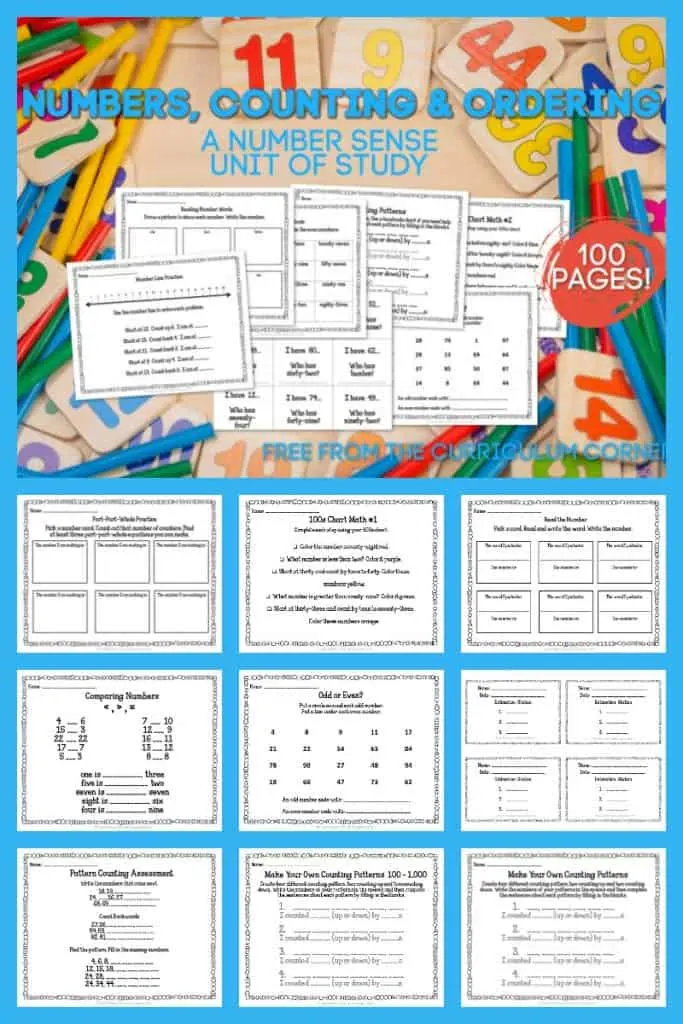
Demonstrate Part-Part-Whole Relationships to Build Number Sense
To work on this concept, students will practice finding combinations to make a number using 2 and 3 parts.
How to Use our Football Cards
- You can use the cards containing 10 footballs. Laminate and cut apart so you have 10 footballs. (You might even enlarge the footballs when printing to make your manipulatives larger.)
- Attach magnets to the back and you can use on your board to demonstrate part-part-whole relationships.
- Place the 10 football magnets on the board.
- Have students look at them and find a combination they can use to make the number 10. For example: 5 + 5 = 10, 4 + 6 = 10, etc. Create a list of the problems the students find.
- Repeat this activity with different numbers of football (i.e. work to make a list of combinations that will make the sum of 8.)
- For older students you may choose to move on to combinations of three numbers to create the whole.
After practicing as a whole group, place students in small groups. Give each group counters and whiteboards or pencil and paper. Have students practice creating part-part-whole relationships with different numbers.
I love this as a morning activity as well. Put a number on the board (start with a number between 1 and 10 and then increase the number as students get better at the activity.) Have students write a part-part-whole relationship on the board under the number when they enter the room. Students love trying to think of the most creative way to get to the number. They will soon move on from two numbers to using three and four numbers.
Help Students Anchor Numbers to Five and Ten to Build Number Sense
Use 5 and 10 frames (you will find some in the download) to help students build an understanding of 5s and 10s. You will also find 5 and 10 frames flashcards within our math tools kit that you can use in your classroom.
Using the blank five and ten frame charts:
- Five and Ten Frame Cards (It is a good idea to print and laminate these for durability. They make great flashcards! You should make enough sets for each pair or group of three to have their own to use.)
- You can also make a set of large cards – just increase the size.
- Round counters or bingo chips (Items in the shape of a circle are best, it will allow for consistency when students move on to the ten frame flashcards. )
Procedure:
- Give each student a blank five frame chart and counters or markers. Give students numbers between 1 and 5 and have them place counters on the frame to create the number.
- Have students share observations they make after they create each number. Students may notice that the number 3 has 2 empty boxes, the number 5 can fill the row and there are five empty boxes when you make the number zero.
- When students are comfortable with the five frames, introduce the five frame flashcards. Hold one card up and have students identify the number of dots. Place students in partners or small groups. Give each group a set of five frame flashcards. Students practice identifying the numbers on each card. Repeat the activities for the ten frames.
- Extension Activities: Once students are comfortable with identifying the number of dots, you can add these activities to practice time. Say the number of empty spaces on the card instead of the number of dots. Say one more than the number of dots (also practice two more, one less or two less) Say the ten fact (if there are three dots – 3 + 7 = 10)
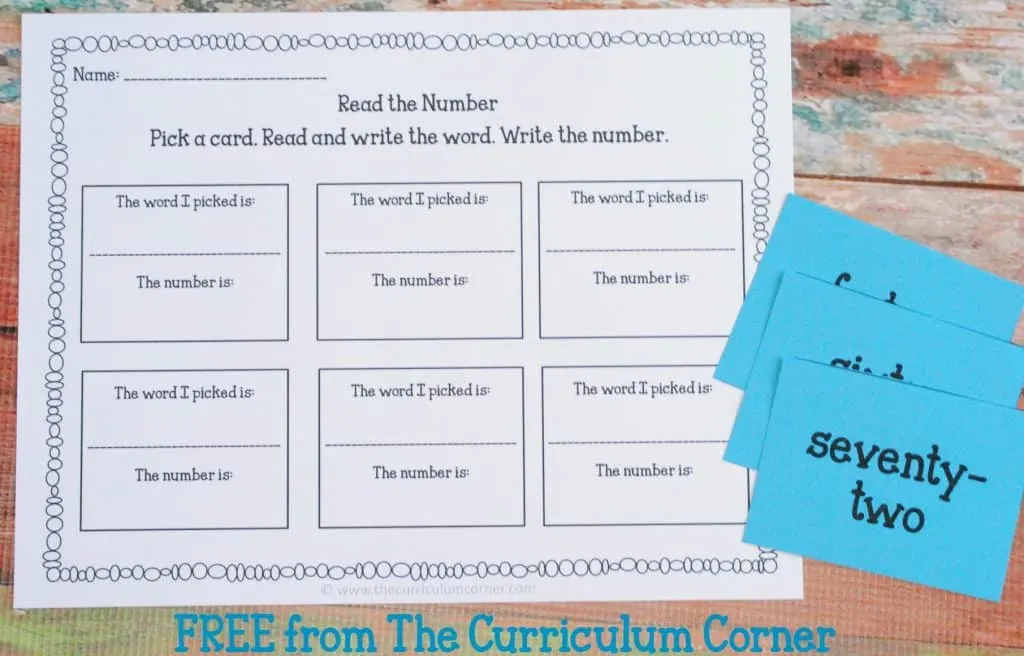
Helping Students with Reading and Writing Numbers to 100
Within the number sense download you will find the following:
- Beginning Number Words reading and writing numbers to 10, includes drawing pictures
- Reading Number Words to 100 practice page for homework or use as an assessment
- I Have, Who Has reading numerals game – contains 30 cards for a whole class game (print on colored cardstock and laminate for durability)
- I Have, Who Has reading number words game – contains 30 cards for a whole class game
- Read the Number independent practice activity or center with printable number word cards
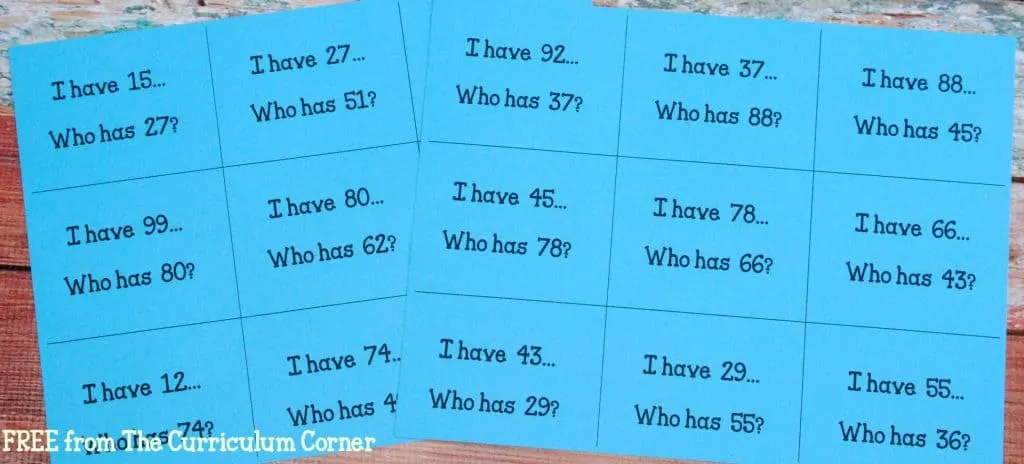
Counting On and Counting Back to 50
Large number cards, printed and laminated (We have created a set of 10 – 20, a set of 30 – 40 and a set of 40 – 50. We have also included 70-80 for the next set of activities. )
- Make Space! (Move desks aside in your room or ahead outside.)
- Hand ten students a number card. Have them line up in order and sit while holding their number card in front of them for other students to see.
- Choose a student that is not part of your number line and give them a number to stand in front of. Give them a number to move to. Ask how many jumps it was from the beginning to end. Repeat with other students.
- With a different set of cards, only hand out 7. Have the students get in order, leaving a space where a number is missing. Ask students to identify which numbers are missing.
- These activities can become morning centers.
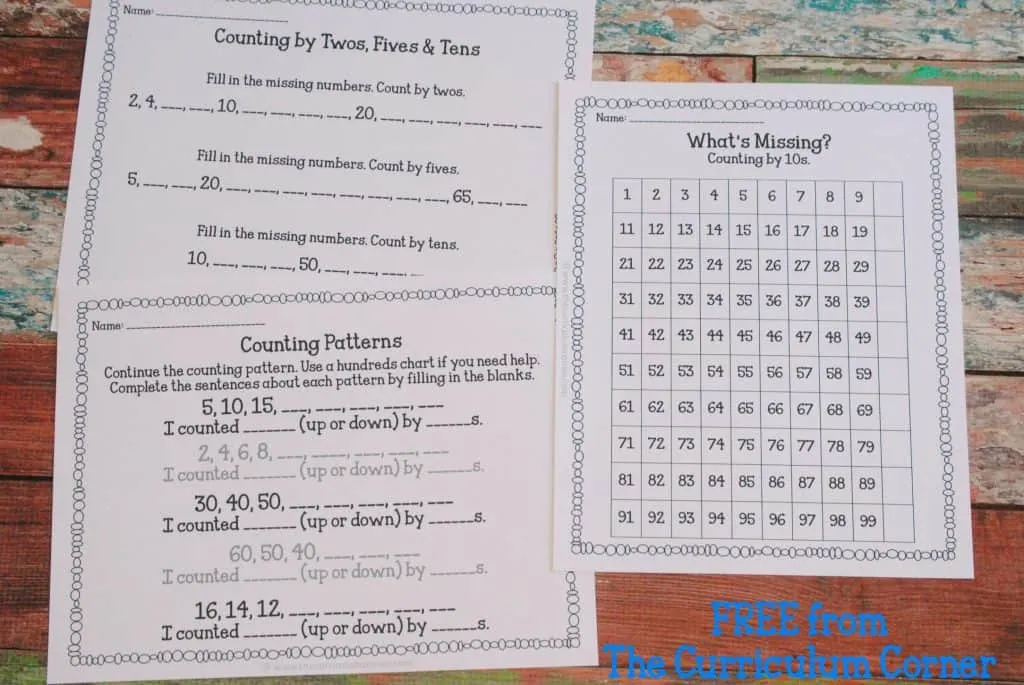
Counting On and Counting Back to 100
(missing numbers in a series, identify number of jumps between numbers)
What’s Missing? – students complete the 100s charts. We have included charts with missing 10s, 5s and random numbers.
Comparing Whole Numbers to 100 (arranging whole numbers in order)
- Practice Activity Page comparing numbers to 30
- Greater Than, Less Than, Equal To Center Laminate and cut out the number cards and work mats. Students follow the directions on the work mats, recording the inequalities they make.
Estimating With Whole Numbers
Estimation Station – Number three jars 1, 2 and 3. Put small items in each jar (marbles, beans, counters, jelly beans, etc.) Set up a station where you can place the three jars and copies of the recording sheet. For a morning center, students practice estimating and record their estimates on the paper. This station can be done every morning or once a week for extra practice.
Counting by Twos, Fives and Tens
No lesson plan is needed to practice these counting skills!
Choose a pattern and have students stand up. Give students an exercise such as jumping jacks, toe touches or windmills. Students count by 2s, 5s or 10s as they do each movement. Children love getting the chance to create their own movement.
This practice can also be done in the hallway with whispering voices.
We’ve included a practice page for counting by 2s, 5s and 10s. The simple design is great to use as a pre- and post-test.
Working on Skip Counting Patterns
Use the practice pages we have created to work on patterns.
Includes pages for working on patterns up to 100 along with patterns between 100 and 1,000.
Odd or Even Numbers
To teach odd and even numbers, try these free resources: Odd and Even Numbers.
We have included two odd and even number practice pages in the download below.
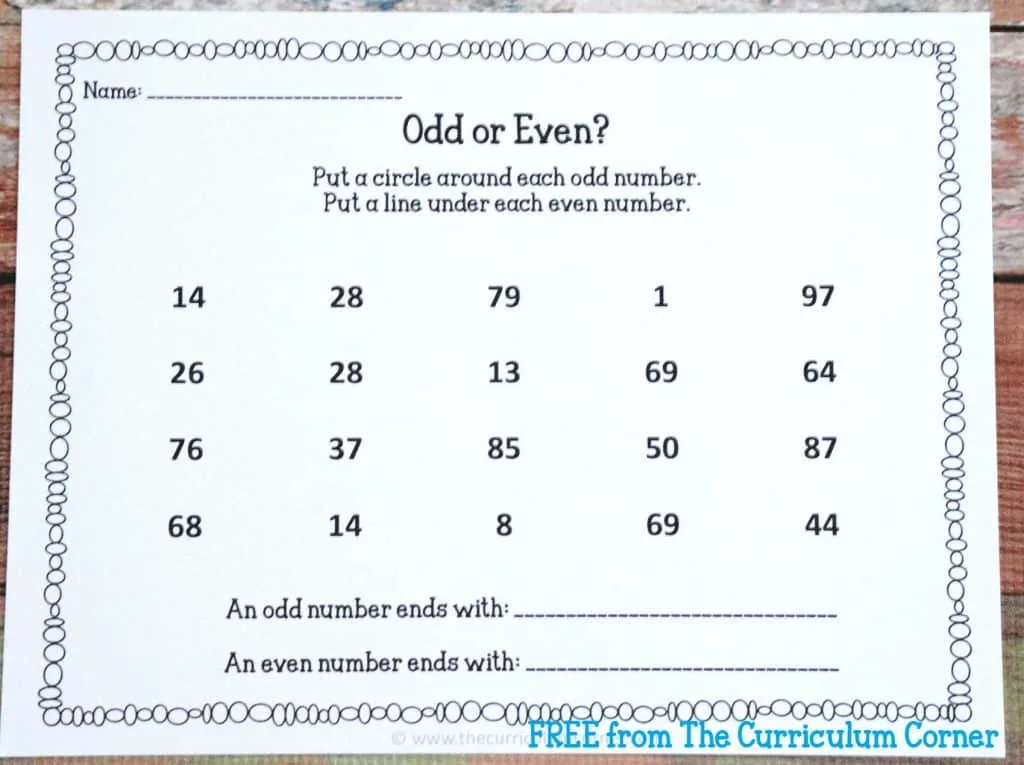
Ordinal Numbers
Use assorted shapes to help students practice using ordinal numbers. I would give my students a handful of shapes, they make a random line of ten, and get to work.
Building Number Sense with 100s Chart Math
You will find printable 100s chart to be used for these activities within our math tool kit. These 100s Chart Practice Pages require your students to weave reading skills with math skills. There are four different options.
You can download this complete unit of study here:
As with all of our resources, The Curriculum Corner creates these for free classroom use. Our products may not be sold. You may print and copy for your personal classroom use. These are also great for home school families!
You may not modify and resell in any form. Please let us know if you have any questions.

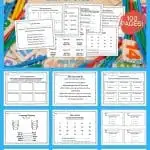
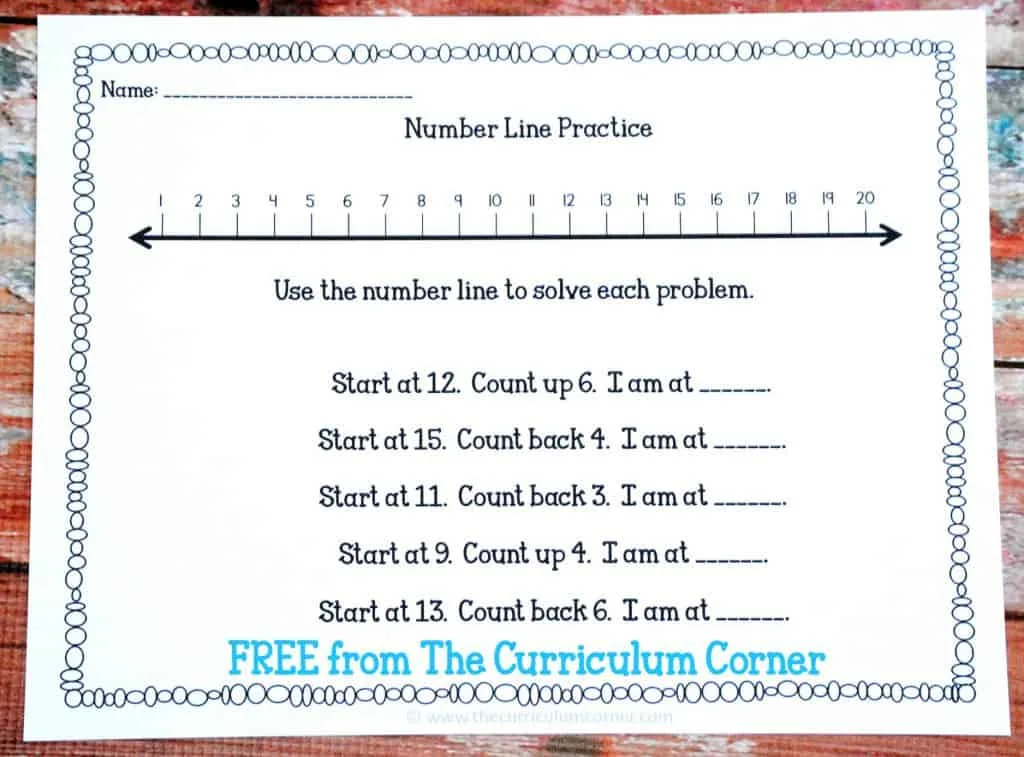
Skip Counting by 2s, 5s & 10s - The Curriculum Corner 123
Tuesday 11th of February 2020
[…] might also like our Numbers, Counting & Ordering unit of […]
Cassandra
Saturday 5th of October 2019
Thank You So Much for this Unit, it will be soooooo helpful for my special need students.
Number of the Day - The Curriculum Corner 123
Sunday 26th of May 2019
[…] Numbers, Counting & Ordering […]
Number Cards & Printable Activities - The Curriculum Corner 123
Monday 15th of April 2019
[…] Numbers, Counting & Ordering Unit of Study […]
I Have, Who Has Numbers (1-30) - The Kinder Corner
Monday 15th of April 2019
[…] Numbers, Counting & Ordering Unit of Study […]